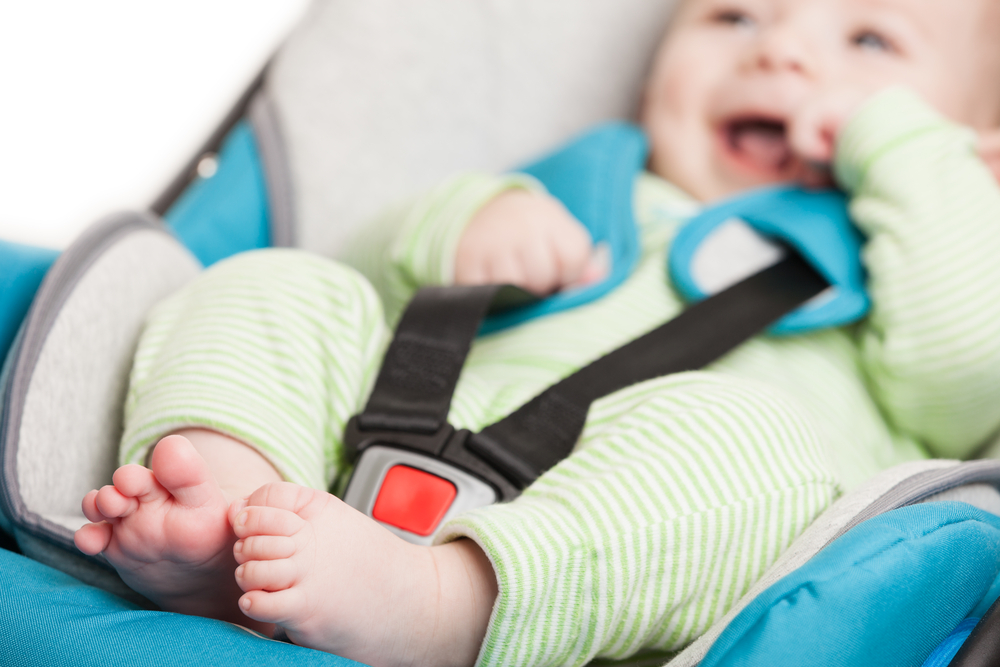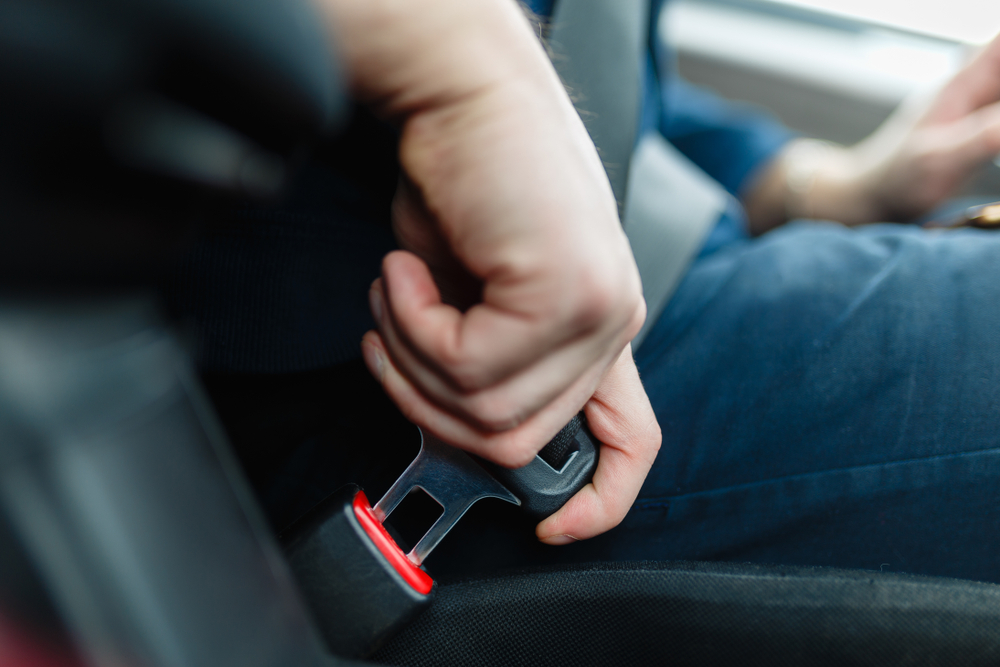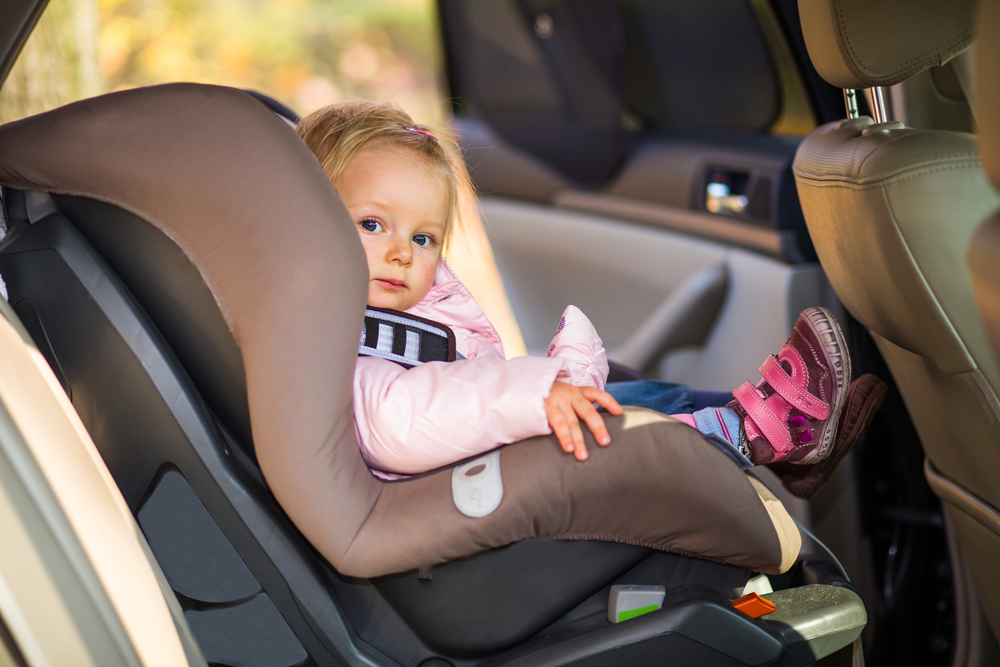Considering that 40% of parents worry that their child’s car seat is not fitted correctly, it will be no surprise that one of the major topics we get asked about is car seat safety. This is an essential aspect of travel for all children, but even more important to get right for babies who need extra physical and emotional support. From understanding UK car seat regulations to knowing what stage of car seat is ideal for your baby, there are many considerations when creating safe travel conditions.
In this article, we will shed some light on keeping a baby safe whilst travelling in a vehicle to achieve peace of mind with every journey.
How to Choose the Best Car Seat for a Baby?
First, we will look at how you can select the right car seat for a baby as that’s intrinsic to achieving safety. 41% of parents say they regret their car seat purchase, whilst many more are left feeling overwhelmed by the vast selection available when they come to make a buying decision. There is good reason for people to feel like this, as making the right choice is vital for not just a child’s safety but also complying with UK law. If you select a product unsuitable for your purpose, you could end up in some hot water.
When choosing the right car seat, make a few considerations. These will help you find the perfect product, but also one that ticks all of the safety boxes you should be concerned with.
Baby car seats should be marketed as suitable for birth to 15 months at least. However, you can also select products that include a larger age bracket, such as our birth to 4 year collection, as long as it’s marked as suitable from a newborn stage. These seats include features such as rear-facing orientation and more supportive inner lining to cater to the additional support babies need to consider. By selecting a car seat not recommended for this age range, you will find that the baby could experience physical injuries such as back or neck damage. They will also not be properly supported in a car accident. Finally, a car seat intended for babies keeps them physically and emotionally safe. By this, we mean they are given the ideal setting to feel supported and comfortable whilst travelling, which helps them develop positive connections with transport as they age.
Another component to consider when choosing the right car seat for a baby to keep them safe is how they will need to use the product. By this, we mean that car seats are intended for road vehicles and other transport modes, such as via a stroller or even in the air. Choosing a robust car seat safe for air travel means that the security elements can provide positive support for your baby. You could also select a baby travel system that allows a car seat to be used with a stroller frame when navigating locations on foot. The main point we are making is that keeping a baby safe in the car is a top priority, but you can also consider other modes of transport by making an informed buying decision from the outset.
Finally, keeping your baby safe in the car also relies on the car seat accessories you choose to use. Products such as baby-watching mirrors or car seat protectors are brilliant products to invest in to keep a child safe at all times.
What Position Should a Baby Car Seat Be Installed In?
Another element of keeping a baby safe in a car is how the seat is fitted. A baby can only stay in a car seat for 2 hours max, but that is only when it is fit for purpose. Choosing the right car seat is only half the battle, as the installation is important for safety.
Children up to 15 months should be seated in a rear-facing position. This is 100% for safety purposes as it ensures that should an impact be experienced, the seat can offer optimal protection. You can also use extended rear-facing car seats that can seat children until later ages for better protection.
For babies who do not have much postural stability and are in important growth phases, a rear-facing position means that the car seat can absorb impact energy. This spreads the impact across the entire surface, leading to a shielded effect for young passengers. Rear-facing car seats are said to be five times safer than forward-positioned models, proving why this is the law for babies.
What Laws Apply to How a Baby Car Seat Should Be Used in the UK?
The UK car seat laws cover children up to 12 or when they reach 135cm in height. The rule you should be aware of for babies is that it is a legal requirement for rear-facing seats to be used for up to 15 months. Also, car seats should only be positioned in the back of the car, with the safest spot recommended for babies being the middle of the back seat.
You can click this link to learn more about UK car seat regulations.
Top Road Safety Tips for Baby Car Seats
We often get asked what our top road safety tips are, to which we always say that choosing the best products for the job is a huge part of the task. However, we think you should consider a few other important factors when keeping a young baby safe. These are as follows:
Always Test the Stability Before a Journey
Before attaching a car seat to a base or seating a child, always ensure the installation is secure. Whilst modern designs are intended to remain in place until moved, the impact of travel can sometimes cause mechanisms to become loosened. A car seat can only offer the best safety if it’s in a position ideal for it, meaning the features can all work as intended.
Be Mindful of a Child’s Development Phase
Babies will need to use rear-facing seats for their first 15 months, but that doesn’t mean the model should just be left in the newborn orientation. You must adjust the headrests, armrests, and harnesses as a baby grows to ensure the seat always offers the intended type of protection.
Taking this approach to a baby’s car seat safety makes it easier when transitioning older children to booster seats, as you already will understand the signs to look for when a seat is not ideal for a child’s current height and weight.
Keep It In Good Order
You may not think that keeping a child’s car seat fresh and clean has anything to do with road safety, but we are here to confirm that it can have a big impact.
This is the case because by regularly cleaning a car seat, you can stop deterioration from occurring and be in the habit of checking for any damage. Whilst seats are intended to be durable, they can still experience cracks and lining tears like any other product. Even something like exposure to the sun can weaken the structure of a car seat, so keeping an eye on its current condition is essential. It’s also a good idea to look at the adjustable features of a car seat when cleaning it to keep on top of those safety considerations. Think of it as car seat habit stacking!
Things To Avoid When Focusing on Car Seat Safety
We have included lots of advice in this article but also wanted to include a few other points of things to avoid when focusing on safety for babies in the car. These are as follows:
- Always buy a European approved seat with the E safety marking. These are a legal requirement across the UK so you will land yourself in some hot bother if you don’t adhere to this rule.
- Avoid buying older second-hand seats as the safety of these cannot be guaranteed.
- Don’t ever make amendments to the seats position whilst moving, any fitting should be completed before travel commences.
- Don’t assume that a child is securely fastened, always check before travelling.
How Can Kiddies Kingdom Help with Finding the Best Baby Car Seat?
With a wide collection of car seats available for every budget, you are sure to find the right product for your needs when you explore our collection. We focus on car safety as a high priority, covering all ages, from newborns through to early teens. By encompassing the future of car seat safety via innovative features and technologies, we have curated a collection of products you can rely upon.
As well as purchasing trusted car seats from us, you can also book an appointment with a knowledgeable team member. During this time, you can chat about car safety and gain support in achieving a supportive environment for your youngest travellers.
Keeping a baby safe is possible as long as you choose the right seat and follow the advice shared in this article.




